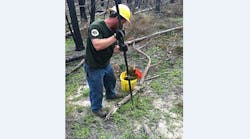President Barack Obama used his appearance yesterday at a Safeway warehouse to order the Environmental Protection Agency and the Transportation Department to issue a first draft of fuel efficiency and greenhouse gas rules for medium and heavy duty trucks by March 2015 and to finalize the rules a year later.
This marks the second phase of Washington’s efforts to reduce pollutants put out by trucks. In 2011 the administration completed fuel standards calling for a 20 percent reduction in heavy-vehicle emissions by 2018. Those rules applied to trucks made between 2014 through 2018. The second phase sets standards for trucks beyond 2018.
The Diesel Technology Forum was quick to issue the following statement:
“Engine and vehicle makers have all met the first set of Phase I standards for higher fuel efficiency in the current 2014 products that are now certified and for sale,” said Allen Schaeffer, the executive director of the Forum, which represents U.S. and international developers of clean diesel technology for all modes of transportation. “Currently, 2.86 million of the 8.8 million heavy duty trucks in the U.S. (32.5%) meet the first-generation clean diesel standards for model year 2007 engines. Of all trucks on the road today, 1.29 million (14.7%) meet the even more stringent clean diesel standards for 2010 and later model year engines."
Schaeffer added that in 2012, the fleet of clean diesel trucks had already reduced emissions of NOx by one million tons and reduced particulate matter by 27,000 tons. This is the same amount of NOx reduction that would result from removing 87 million light duty cars and trucks from the road for one year, and the same amount of particulate matter reduction as removing 225 million cars and trucks for one year, he claimed.
“As the fleet of older Class 3-8 medium- and heavy-duty trucks are replaced each year with new clean diesel trucks, these emissions benefits will continue to increase, while fuel consumption decreases,” he concluded.
Meanwhile, an off-road vehicle manufacturer this week introduced its own contribution to a smaller carbon footprint. Toyota Material Handling, U.S.A., Inc. (TMHU) announced it is planting more than 30,000 trees through the Arbor Day Foundation this year as part of the company’s commitment to plant a tree for every new Toyota 8-Series lift truck sold in the U.S. and Canada in 2013. The trees will be planted in the U.S. and Canadian forests and communities damaged by fire or other natural causes last year. So far nearly 90,000 trees have been planted since the company first formed a relationship with the nonprofit organization in 2006.
Since the inception of Toyota Industries Corporation's Environmental Action Plan in 2005, the company has implemented 1,700 energy-saving measures it says resulted in a CO2 emission reduction of 120,000 tons and in fiscal year 2013 decreased CO2 emissions by 17% globally throughout its production operations. These efforts include the introduction of products such as the 8-Series large capacity 8,000 - 17,500 lb. cushion and pneumatic lift trucks, which include diesel and gas engines designed to enhance performance and fuel economy.



